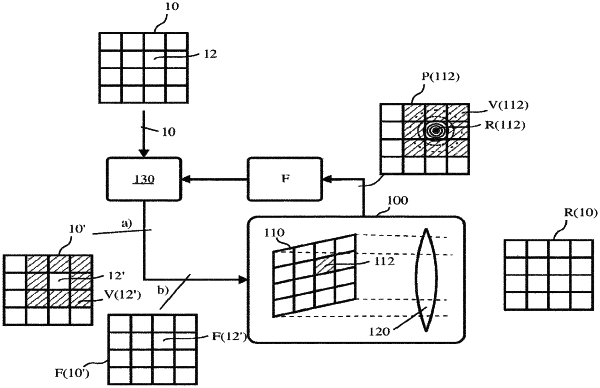| CPC H05B 45/10 (2020.01) [F21S 41/141 (2018.01); F21S 43/14 (2018.01); H05B 45/325 (2020.01); H05B 45/37 (2020.01); H05B 45/44 (2020.01)] | 20 Claims |

|
1. A method for adapting a digital lighting setpoint intended to be projected by a digital lighting unit of a motor vehicle, comprising a matrix light source and an optical system, the digital lighting setpoint comprising an elementary light intensity setpoint for each elementary light source of the matrix light source, characterized in that the method comprises
a) a step of converting, by means of a computing unit, each elementary light intensity setpoint into a parameter of an electrical signal to be applied to the elementary light source in order to achieve said elementary light intensity setpoint;
b) a step of applying, by means of a computing unit, a digital filtering to a matrix grouping together the set of parameters before relaying the filtered parameters to the lighting unit, said digital filtering of a given parameter taking into account the light response of the corresponding elementary light source, this response comprising the contribution of the light beam generated by said elementary light source with respect to the light intensity of the corresponding projected pixel R and of the projected pixels that form part of a predetermined spatial neighborhood V of said projected pixel R.
|